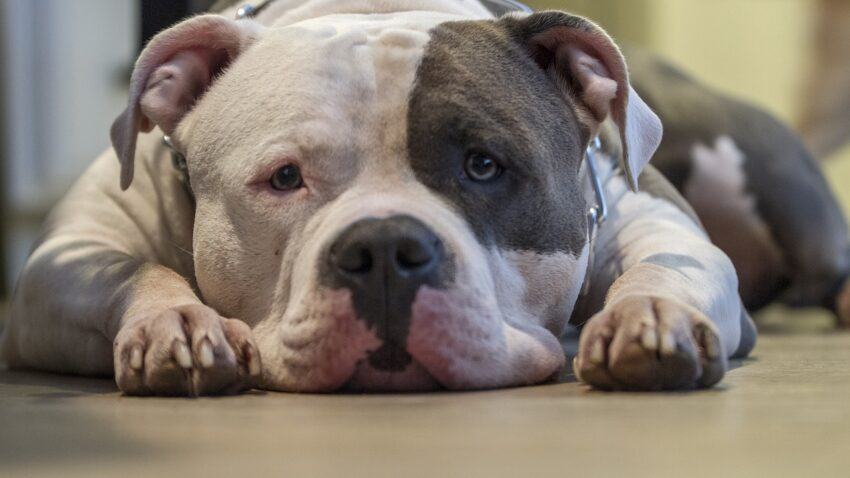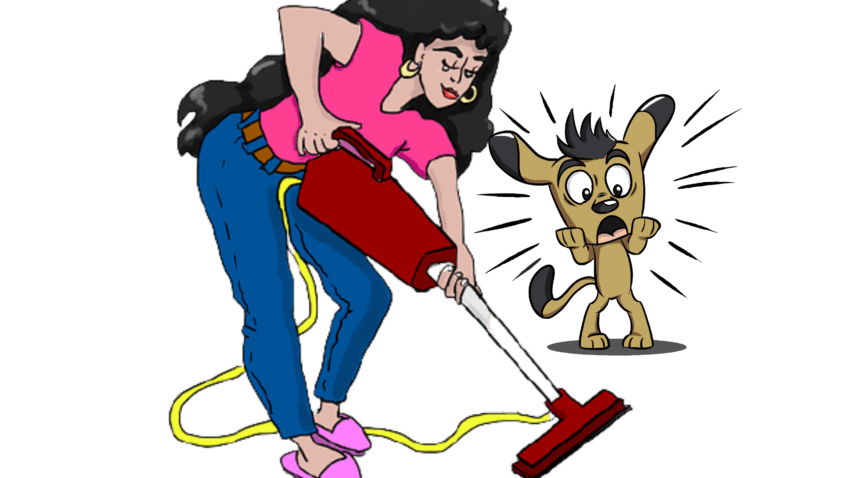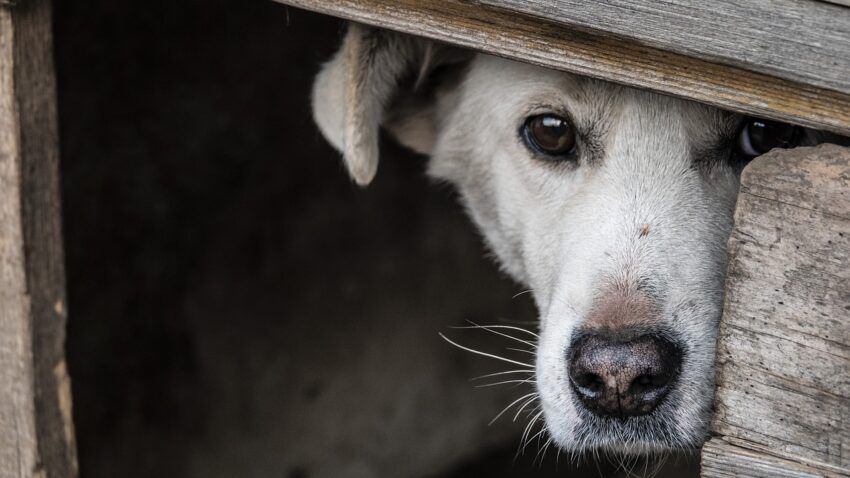
Most devoted owners will tell you their dog is like a family. They let their pets sleep with them and buy gifts on birthdays and Christmas. These pets are every breed imaginable. But it is not all love and hugs. Pets need to be trained, in the behaviour and rules of the house. Sometimes, your pets become upset, so How We Can Calm Down Anxious and Distressed dogs?
Does Breed of Dog Make A Difference
Research indicates that some breeds show more depression, anxiety, and separation stress than others. These breeds include Basset Hounds, German Shepherds, Border Collies, Jack Russels, Australian Shepherds, Spaniels, Bichon Frise, and Labradors.
On the flip side, according to the American Kennel Club, some breeds are considered calm and suitable to have around people, including children, or therapy dogs. These are:
Cavalier King Charles Spaniel, Tibetan Spaniel, Irish Wolfhound, Pekinese, Bergamasco Sheep Dog, Great Pyrenees, English and French Bulldogs, and Saint Bernard.
I can vouch for Saint Bernards. My daughter is raising four children and has had two Saint Bernards. They are big galoots who constantly want to shower you with slobbering affection!
Studies on Stress and Anxiety
According to Scientific Reports, in a study on canine anxiety in 13,700 Finnish pet dogs, it was discovered many dogs experience stress. More than 70% suffer from anxiety. The study was based on seven behaviour traits – sensitivity to noise (most common at 32%), fearfulness, fear of heights, restlessness/impulsivity, obsessive behaviour, separation anxiety, and aggression.
The study concluded that anxiety, stress, and behaviour issues are common in all breeds, affecting the welfare of millions of dogs in the United States and Europe.
What Causes Anxiety and Stress
Dogs can be anxious or stressed for several reasons:
-
Loud noises
While it is common for dogs to fear thunder and lightning, several other unexpected noises will leave them anxious such as fireworks, gunshot bangs, vacuum cleaners, machinery such as lawnmowers, vehicles on the road, loud televisions, sirens and alarms.

The size of the dog doesn’t mean anything. We looked after this beautiful Samoy who would try to climb in my husband’s lap during a thunderstorm, no easy feat considering how big he was!
-
Separation Anxiety
One Science News study claims that underlying frustration symptoms need to be addressed instead of focusing on a diagnosis. Understanding the symptoms could lead to better treatment.
Dogs with separation anxiety, upon being left alone, will sometimes destroy surroundings, bark loudly, urinate or defecate, and may even try to escape. They feel agitated when their owners leave and shower them with affection when they return.
-
Relocation
Dogs enjoy routines and uprooting them from home could cause distress and anxiety. They eat and sleep in favoured locations; they even have their walking routes. Suddenly, they are in a new home and area and nothing is familiar to them. They become anxious and uncomfortable.
-
Changes in Family Members
Memabers of the family leaving or the arrival of a new one such as a baby can sometimes upset a dog. His routines or schedule may change, he may get less attention, and he may even experience a form of jealousy.
-
Abuse from Previous Owners
Your dog may come with some baggage, such as previous abusive owners so he is anxious and unsure of you and your kindness. It will take you a while to earn their trust and for them to become receptive to you. As the owner, you will have to have an abundance of patience and keep a calm environment around them.
-
Fear

What causes fear in a dog? The fear can be caused by a thing, person or even a situation. Signs that your dog could be afraid are shaking, hanging back, barking, whining or hiding. A dog with unreasonable or excessive fears becomes unhealthy, displays unwanted and dangerous behaviours, or becomes agitated and anxious.
-
Travel
Contrary to popular opinion, not all dogs love car rides, with their heads hanging out the window and having the wind wildly blowing their fur about. Some dogs experience motion sickness just as some adults do.
Besides feeling sick from the motion, they can vomit, defecate or urinate, drool excessively, shake, bark, and even try to escape.
-
Visits to the Vet
Many dogs fear the vet – from the unfamiliar surroundings and people to being poked and prodded on the exam table. No wonder your dog is upset. As humans, I think we can relate.
What are the Signs your Dog is Stressed
There are certain common behaviours that signal a dog is in distress such as:
- Whining or barking excessively
- Panting
- Licking their paws
- Pacing and wandering
- Growling
- Body language and expressions such as ears standing up or tucked tail
- Itching and scratching
As Owners What Can We Do?
You feel for your pets and want to do the most you can to help them deal with their anxiety and stress. As an owner, there are several ways you can help.
-
Exercise
Dogs love routines; it is a great way to bond with your anxious dog. Any exercise will be beneficial – playing, walking, even swimming.
-
Security blankets or favourite toys
Sometimes, having their favourite toy or snuggling in a blanket will calm them down. Even a piece of clothing belonging to a beloved family member is comforting and familiar to them (as long as you don’t mind it being slobbered on or covered in dog hair).

-
Patience, and lots of love
This is the best way to show your dog you are there for them. Petting them, talking softly, picking them up if you can, and hugging them helps to soothe an anxious and stressed pet.
-
Background music (preferably classic)
Like humans, dogs too can benefit from relaxing and calming music. Not only is it soothing, but it can also help to drown out other unwanted and frightening noises.
-
Secure, safe environment
Sometimes, none of the above will work. In that case, a safe quiet environment where your dog can unwind and have some alone time may help him. Some soothing background music might also calm him and leave him feeling less anxious.
-
Get them used to crates or carriers.
Sometimes, dogs have to travel or go to the vet so getting them used to these will make trips a little less stressful. If the crate is large enough, it can be a quiet, safe place.
-
Alternative methods
Before giving your dogs sedatives, check with your vet. Safer remedies might include music therapy, massages, aromatherapy, and supplements such as CBD for Dogs.
Final Thoughts
As you can see, having a distressed dog can be quite a challenge. Providing ways to comfort them and offering unlimited love and patience can calm your anxious pet.
If none of these suggestions work, it may be time to call the vet and get help.
What works for you when your dog is distressed? Please let us know in the comments below.
Mary Ann shares her passion and personal experience with CBD and medical cannabis as well as the experiences of others. Do visit regularly to find out the ins and outs of CBD and medical marijuana products. If you are passionate about something and would love to share it on your own website, then click here to get started.
